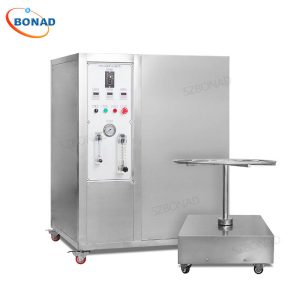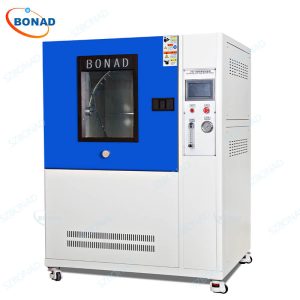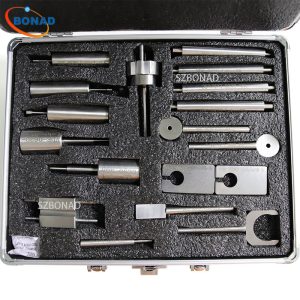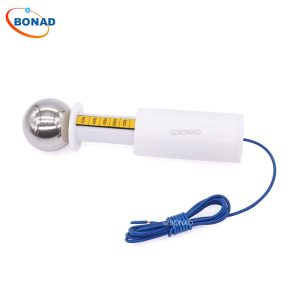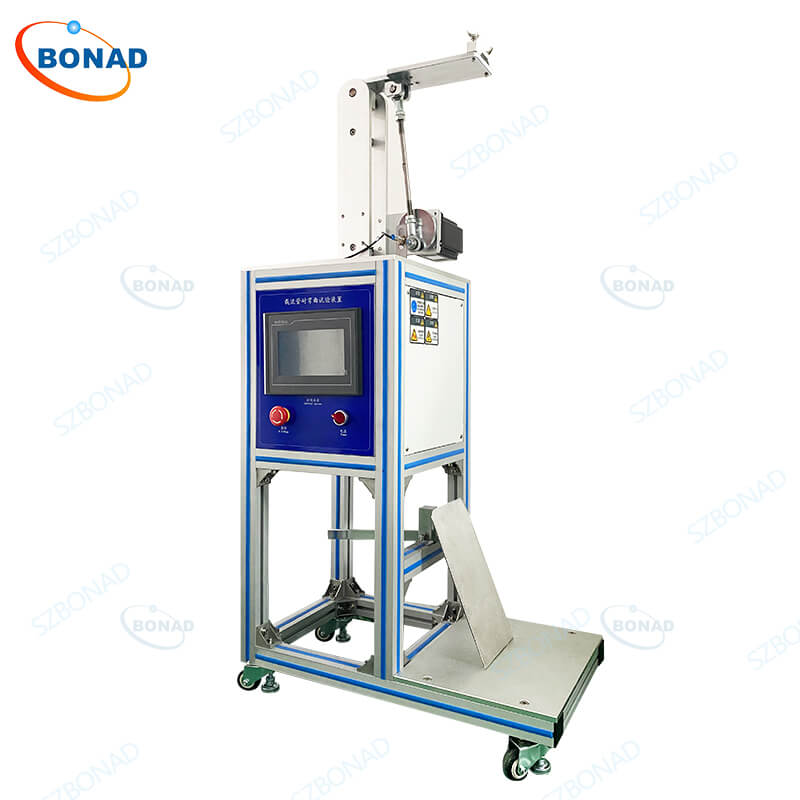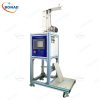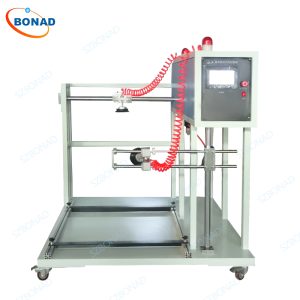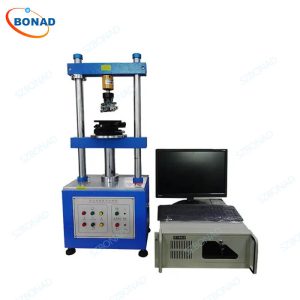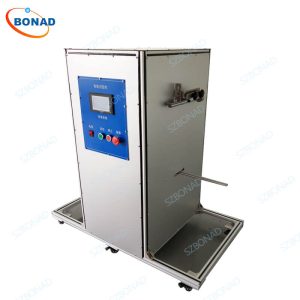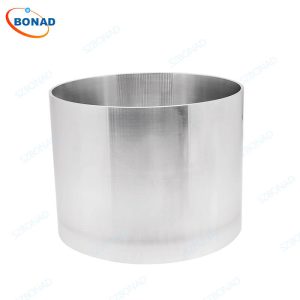IEC 60335-2-2 Vacuum Cleaner Current-Carrying Hoses Flexing Resistance Test Equipment
Standard Compliance
This tester complies with IEC60335-2-2 Clause 21.103 figure 102 standards, ensuring that your testing procedures meet international safety and quality benchmarks.
Main Technical Parameters
| Feature | Description |
|---|---|
| Control Mode | PLC control with touch screen human-machine interface for intelligent operation. |
| Test Station | Single station. |
| Frame Structure | Made from electrophoretic aluminum alloy with sprayed steel plate sealing; left and right structure with control part on the left and test operating table on the right. |
| Test Drive | Stepper reduction motor. |
| Lifting Angle | 40°±1°. |
| Weight | 5kg. |
| Inclined Plate Angle | Maximum of 3°. |
| Rocker Arm Length | 300mm. |
| Test Speed | (10±1) r/min. |
| Test Cycles | Adjustable from 0 to 99999 cycles via touch screen settings. |
| Power Supply | AC220V 50Hz. |
Test Procedures (Extracted from IEC 60335-2-2 clause 21.103)
The hose end intended for connection to a motorized cleaning head is attached to the pivoting arm of the tester as shown in Figure 102 of the standard documentation. The distance between the pivot axis of the arm and where the hose enters a rigid part is maintained at 300 mm ±5 mm.
The arm can be raised from a horizontal position by an angle of 40°±1°. A mass of 5 kg is suspended from a convenient point along the hose, ensuring no tension when in a horizontal position.
If necessary, repositioning of the mass during testing is allowed.
The mass slides against an inclined plate so that maximum deflection does not exceed 3°. The arm operates via a crank rotating at a speed of (10±1) r/min.
The test involves completing 2500 revolutions after which the fixed end of the hose is rotated by 90°. This process continues until four sets of tests are completed or until hose rupture occurs before reaching 10000 revolutions.
Maintenance Notes
- Cleaning: Ensure that the machine remains clean at all times.
- Rust Prevention: Regularly spray anti-rust oil on metal parts and standard interchangeable parts after use.
- Lubrication: Add lubricating oil regularly to all rotating parts of the machine.

